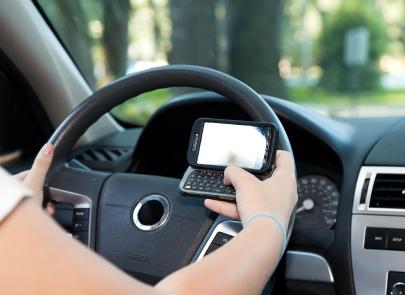 Despite knowing the risks of distracted driving, American are far more likely to use their cell phones than their European counterparts.
Despite knowing the risks of distracted driving, American are far more likely to use their cell phones than their European counterparts.
Most U.S. drivers report talking on their cell phone and about one in three read or sent text or email messages when driving, according to a new study by the Centers for Disease Control and Prevention.
The study, published in CDC’s Morbidity and Mortality Weekly Report, examined two specific types of self-reported distracted driving behaviors: cell phone use while driving and reading or sending text or e-mail messages while driving, among drivers aged 18-64 years in the U.S. and in seven European countries (Belgium, France, Germany, the Netherlands, Portugal, Spain, and the U.K.).
CDC researchers analyzed data from the 2011 surveys and found that 69 percent of U.S. drivers talked on their cell phone while driving within the 30 days before they were surveyed compared to 21 percent of drivers from the U.K. The study also found that 31 percent of drivers in the U.S. reported that they had read or sent text messages or emails while driving, compared to 15 percent of drivers in Spain.
“The cell phone can be a fatal distraction for those who use it while they drive,” Dr. Tom Frieden, CDC director, said in a statement. “Driving and dialing or texting don’t mix. If you are driving, pull over to a safe place and stop before you use your cell phone.”
CDC researchers also looked specifically at U.S. drivers and found that in the 30 days before they were surveyed:
• There were no significant differences between men and women in terms of cell phone use or reading or sending text or email messages while driving.
• A higher percentage of 25-44 year-old men and women reported talking on a cell phone while driving than those ages 55–64.
• A higher percentage of 18-34 year-old men and women reported reading or sending text or e-mail messages while driving than those ages 45-64.
“Everyone, of every age and generation, has the ability to make a decision to drive distraction-free,” Dr. Linda C. Degutis, director of CDC’s National Center for Injury Prevention and Control, said in a statement. “It’s especially risky for young, inexperienced drivers—who are already extremely vulnerable to crashes—to be distracted when they are behind the wheel. Answering a call or reading a text is never worth a loss of life.”
Many strategies have been applied to try to reduce distracted driving in the U.S. and other countries. These include law enforcement efforts, communication campaigns, vehicle and cell phone technologic advances, legislation, and safe driver education.
Some strategies have been aimed specifically at high risk drivers such as teens and new drivers. As of February, 33 states and the District of Columbia have laws in place restricting at least some teens or new drivers from using cell phones while driving. More research is needed to identify strategies that can decrease distraction-related crashes.
According to the CDC, parents have a crucial role in keeping their teens safe on the road. They can model safe driving behavior and consider using tools like parent-teen driving agreements to set and enforce rules for their teens, such as always driving distraction-free. Safe driving habits for teens include never talking on the phone or texting behind the wheel, never drinking and driving, following state Graduated Driver Licensing laws and wearing a seat belt on every trip.












